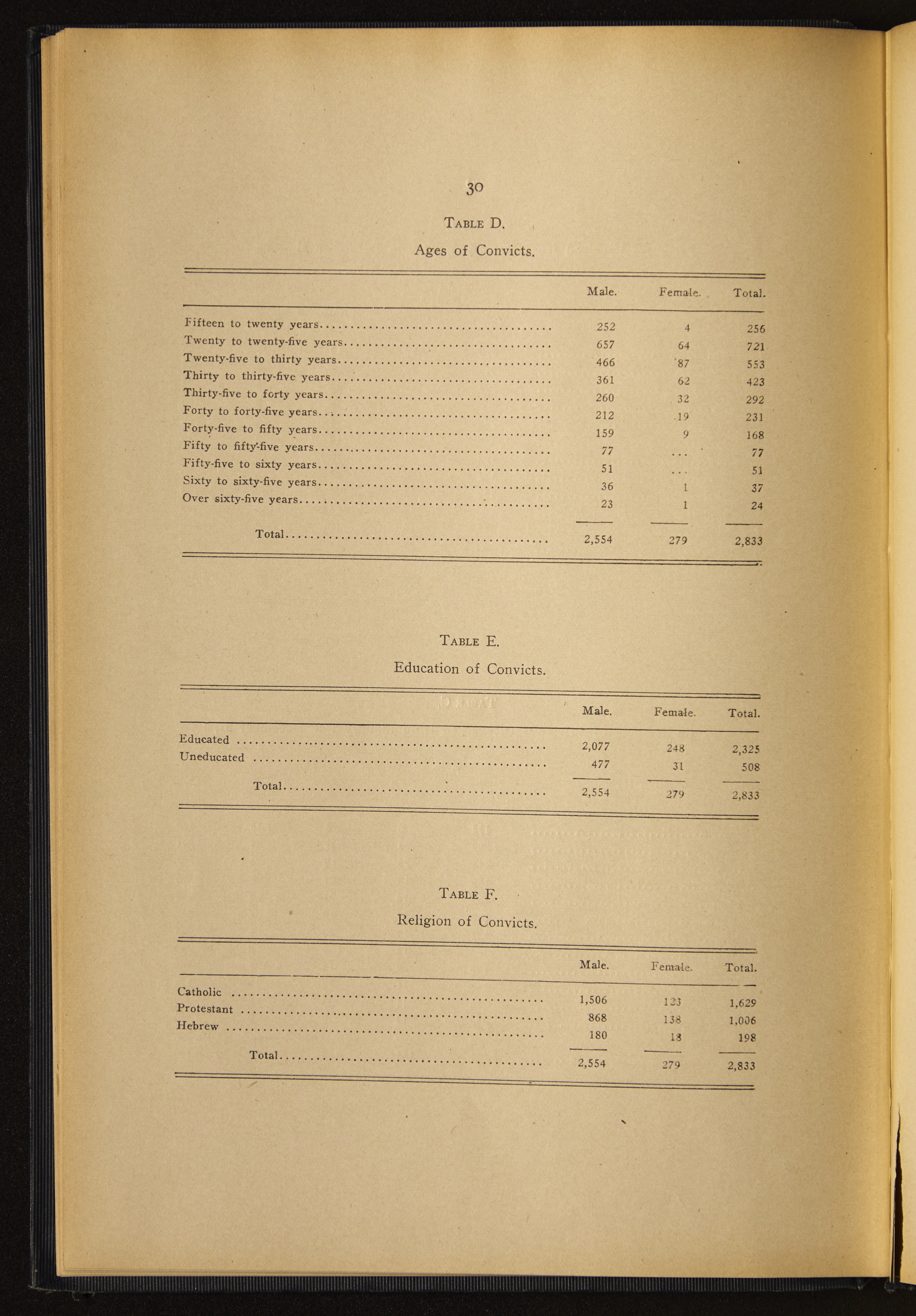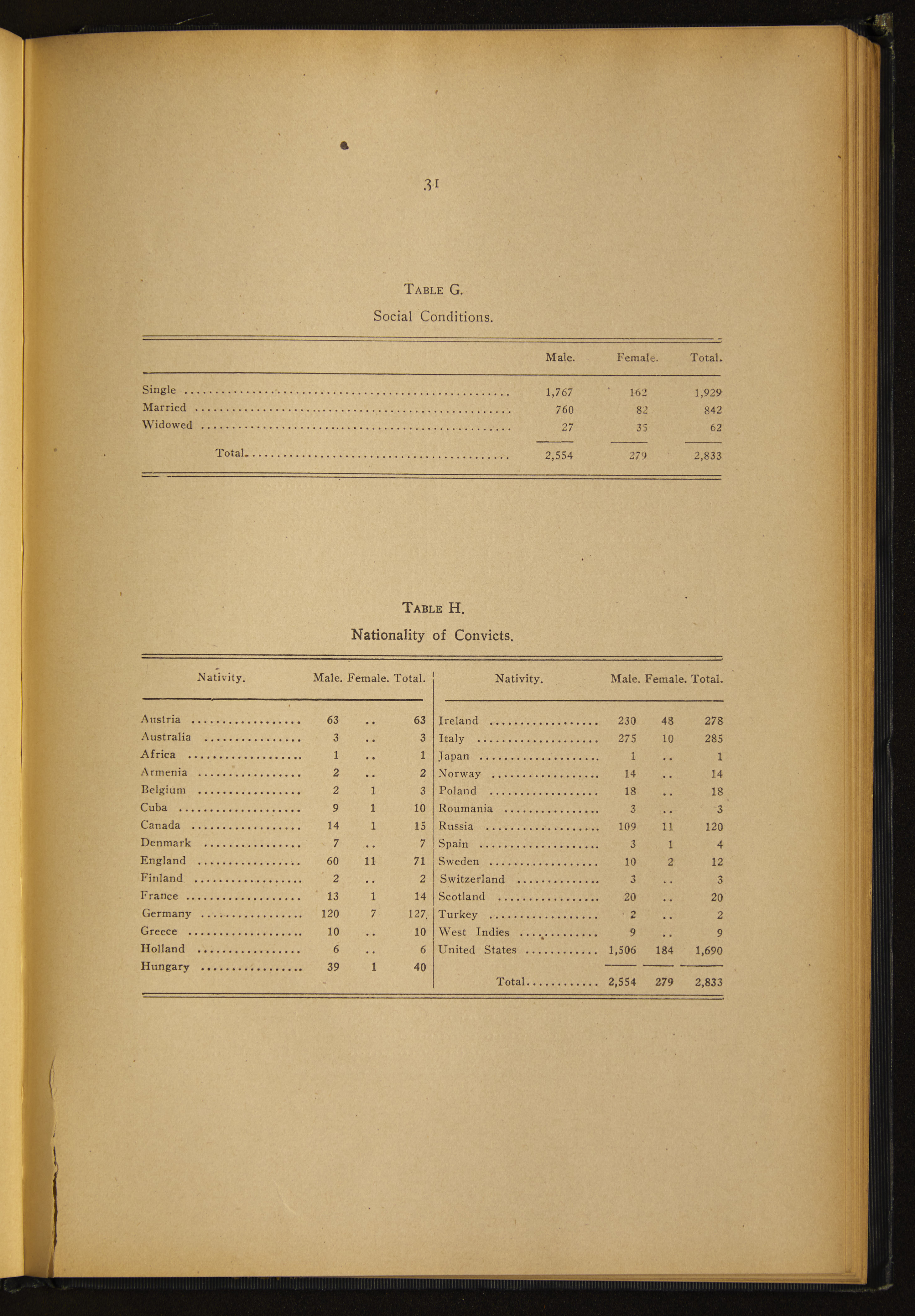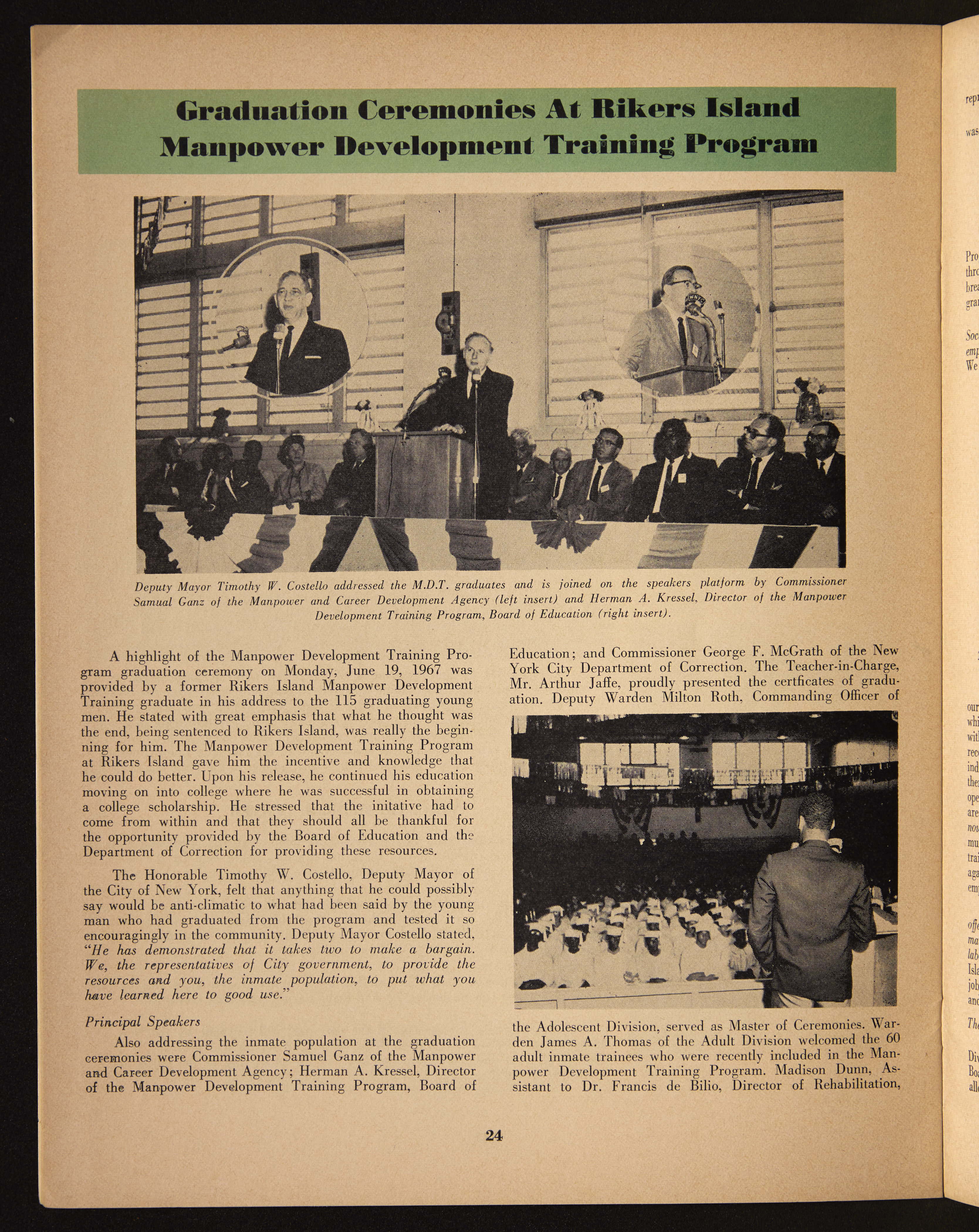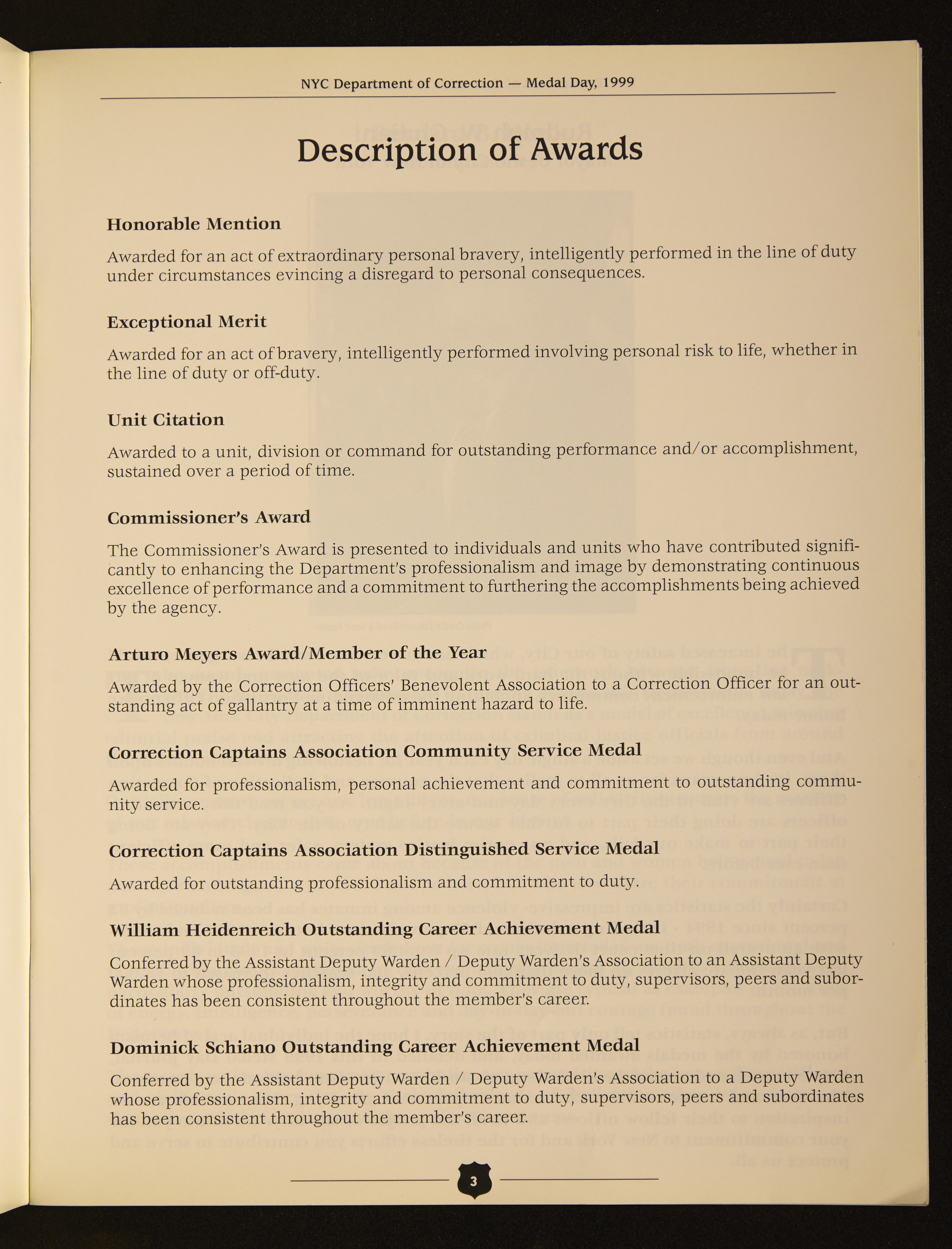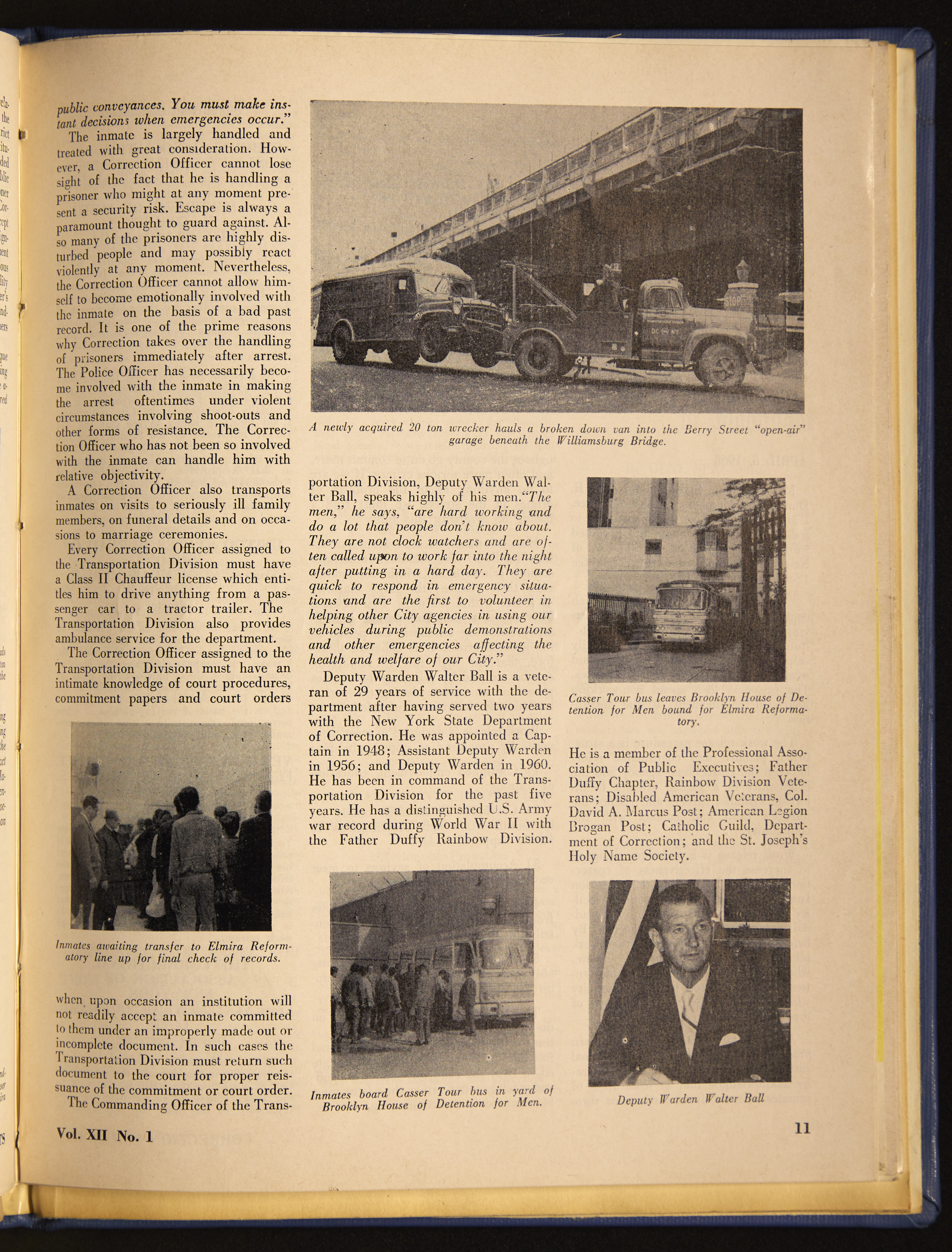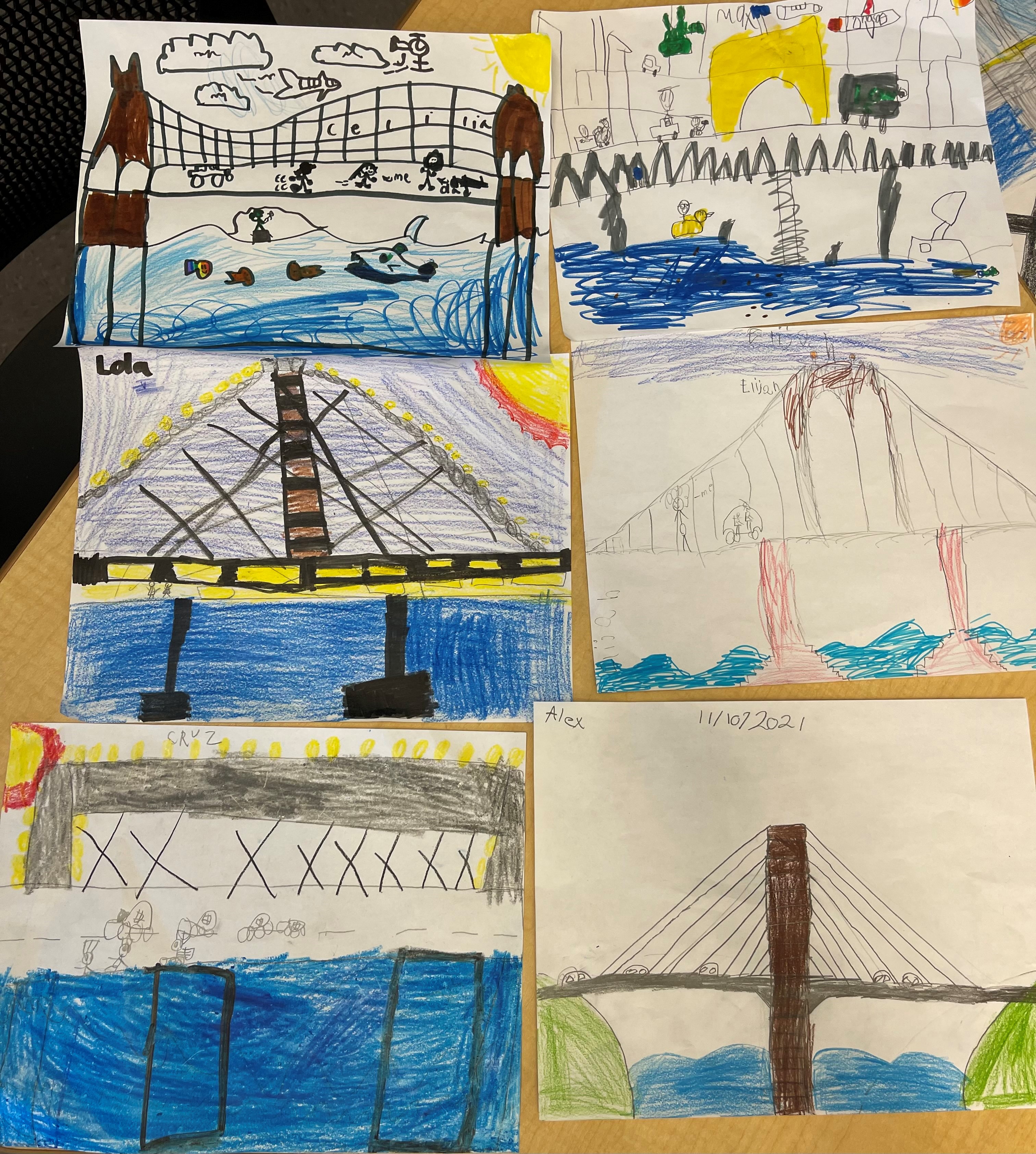|
|
Spotlight on: New York City Department of Correction |
||||||
by Christine Bruzzese, Director, Municipal Library |
||||||
|
The New York City Department of Correction was established in 1895 after being separated from the Department of Public Charities. Department of Correction is responsible for overseeing the city's penal institutions, inmates, functions, and programs. The Municipal Library contains some historical materials on this agency. Annual reports offer statistical information on the various institutions. Here is a section from the 1908 report on "convicts" at the penitentiary on Blackwell's Island.
From the 1967 report, here is a discussion of the Manpower Development Training Program graduation at Riker's Island. This program was utilized to train inmates for productive employment and return to the community.
The men and women of Correction are known as New York's boldest. Every year a Medals Day is held to honor accomplishments of individuals and units within the agency. Here is a description of the various awards.
Correction Sidelights was an agency newsletter published quarterly from 1957 to 1968. The publication kept employees informed on current developments and accomplishments as well as news like retirements and promotions. Displayed here is a feature on the Transportation Division from Winter 1968.
Municipal Archives Activitiesby Sylvia Kollar, Director, Municipal ArchivesOctober was American Archives month - a time dedicated to the historical collections of archival organizations, and just as vital, the work of archivists. It is always especially inspiring to take the time to read about and discover the ingenuity of other archivists who work so hard to expand access to collections across institutions, but this year, I was reflecting on the Municipal Archives staff. Since I started at the MA in 2014, I have had the privilege to work alongside some of the most creative, energetic, intuitive, and driven people I've known. There is no doubt the NYC Department of Records and Information Services' charter mandate to preserve and make records accessible reads simply, but it carries an incredibly dynamic, and sometimes overwhelming, charge. In fact, even if funding had no bounds, to execute the work takes specific skills, a unique curiosity, and a creative streak to juggle priorities when everything is a priority. This column will serve as a sincere thank you to the MA staff who have:
So, here is to: The Collections Management team: Patricia Glowinski, Alexandra Hilton, and Amy Stecher The Appraisals and Accessions team (of 1!): Todd Gilbert The Reference and Research team: Boris Aphanou, Sarah Capano, Katie Ehrlich, Dwight Johnson, Kayros Lippwe, Rossy Mendez, Melissa Peralta, Eleanor Prince, Amrit Singh and Donald Tang. In addition, Gabriel Gervais, Asha Kapadia and Alla Kerzhnerman, who have retired in the last year. Digital Programs: Amalca Alexander, Quinn Bolewicki, Alexandra Dolan-Mescal, Barbara Hibbert, Matthew Minor, Chris Nicols, Kelli O'Toole, Justin Tramonti, and Urmi Udeshi Conservation and Preservation: Cynthia Brenwall, Vin Buchan, Lindsey Hobbs, and Nora Ligorano. The Library's Vertical Files Collection: Zoological Parksby Pauline Toole, CommissionerLast month’s newsletter on the Vertical Files in the Municipal Library started with the first folder in the collection. This month the focus is on the last file-or files because there are two on the same topic: Zoological Parks. Within the files there are folders demarking decades: prior to 1970, 1970s, 1980s, 1990s, 2000. Almost all of the content are news clips; although there is one media release from 1998 when then-Governor George Pataki announced grants to zoos, aquariums and botanic gardens. The other distinctive content are brochures for the various zoos of the City ranging from “THE BIGGEST LITTLE ZOO ON EARTH” (Staten Island Zoo) and the Flushing Meadow Zoo. An interesting find is the program from the September 1961 opening of the New Children’s Zoo in Central Park which was rebuilt thanks to a gift from former Governor and Mrs. Herbert H. Lehman to celebrate their 50th Wedding Anniversary. The 1970s was a bleak decade for the City’s Zoos. There was a theft of snakes from the Bronx Zoo and macaws from the Central Park Zoo. Overbreeding of various animals led to the sale of 90 animals from a chicken to a lion. And the zoos were condemned as hell holes and sites of animal torture. The New York Zoological Society made a deal with the City in 1980 to take over management of the Flushing, Prospect Park and Central Park Zoos. By the mid 1980s conditions had improved. The Central Park Zoo re-opened after an extensive renovation and became a zoo without bars. The Bronx Zoo was lauded for its new approach to remove animals from cages and house them in more natural settings and in 1989 it was the best zoo in the country, The Prospect Park Zoo, originally built in 1934, by contrast was among the nation’s worst zoos. By 1993 it had reopened, without the large animals that once resided in dingy cages, but with plenty of smaller animals such as baboons and sea lions. Early in the 21st Century, budget cuts again threatened the zoos but were rejected by the City Council after public outcry. New exhibits were opened and all of the City’s zoos bragged about new babies ranging from porcupines to seals to zebras. The last clips in the series date to 2004. Brooklyn Bridge Programby Julia Newcity, Educational Outreach CoordinatorIn 2020, the Municipal Archives at the New York City Department of Records and Information Services (DORIS) began offering a virtual version of our popular Brooklyn Bridge program to elementary school classes. The program explores the Municipal Archives' large collection of Brooklyn Bridge material related to the bridge's design, construction, and modes of transportation. Through the online presentation, classes learn about these unique and rare archival materials. The experience provides students with an opportunity to interact with primary sources and gain a better understanding of the Brooklyn Bridge and its relationship to infrastructure and transportation within New York City. To learn more about the program and how to sign up your child's class, please visit: https://on.nyc.gov/2YAcGWF.
Pictures from Ms.Pineda's class. Giving Tuesdayby Kenneth R. Cobb, Assistant CommissionerThe collections of the Municipal Archives and Municipal Library are world-renowned for their scope (almost 400 years!), breadth (records of all three branches of municipal government-executive, legislative, and judicial) and size (more than 185,000 cubic feet and 100 terabytes). November 30, 2021 is "Giving Tuesday" and we are asking that you consider making a donation to the New York Archival Society, our affiliated 501 (c) 3 organization. Collection treasures include original architectural drawings of the Brooklyn Bridge and Central Park, Dutch and English colonial-era manuscripts, two million photographs, audio and video recordings, and millions of documents, reports and publications relating to every conceivable topic in American and City history. The archivists and librarians continue to preserve this fabulous legacy, but it is a big job. Please make a donation. Your generosity will help us meet the challenges ahead. |
|

